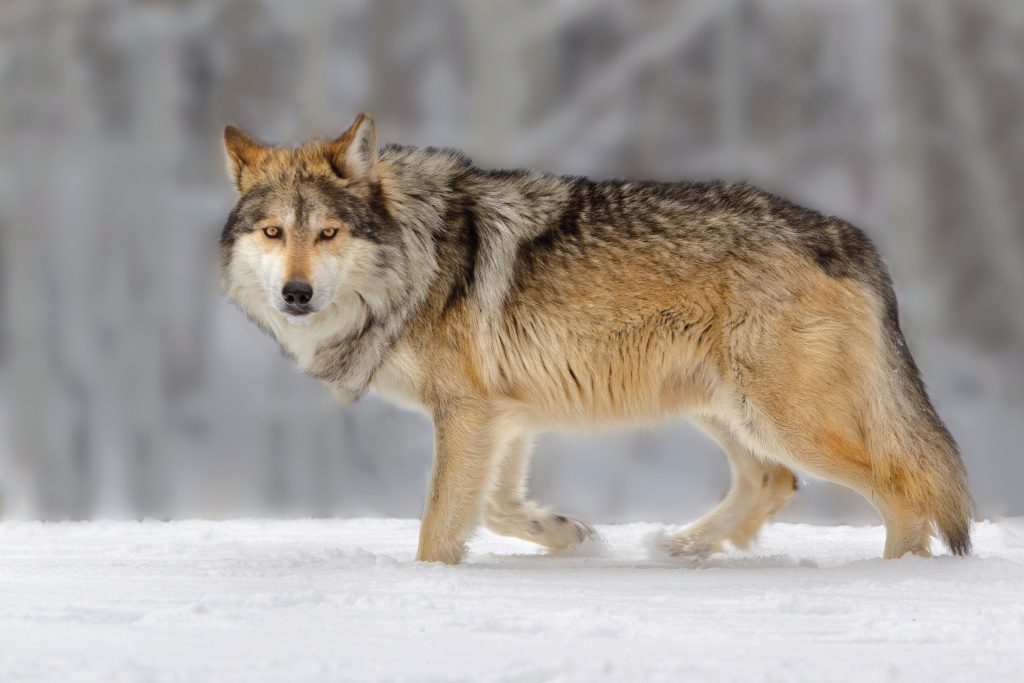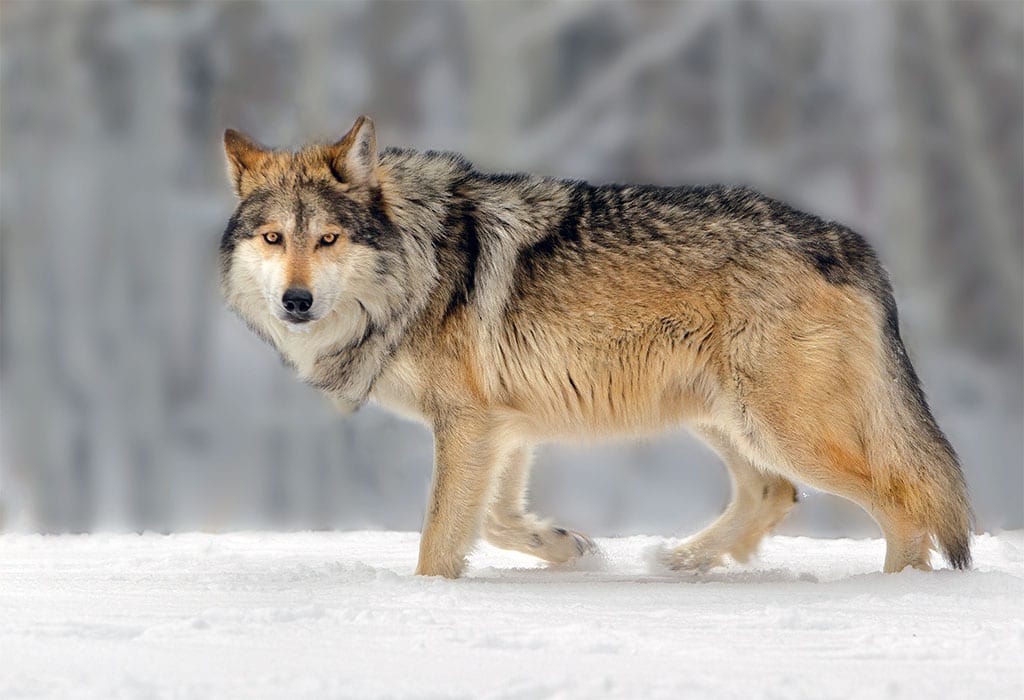It is a very strange phenomenon to become invested in and attached to an individual animal that you know you will never encounter. But, whether it is their mystique or their charisma, large carnivores seem to engender a distant reverence that can feel strangely like companionship.
That is how I came to feel about Asha, the Mexican wolf who roamed some 500 miles from southeastern Arizona all the way up to the Sangre de Cristo Mountains where I was born and raised and call home today. Asha’s headline-grabbing journey was relatively short. And I hadn’t even heard of this individual wolf until I started receiving excited text messages about her. But in a short time she captured my imagination as a wildlife advocate and a conservationist–two hats that I wear which people often mistake for one.
As a wildlife advocate who cares deeply about not only populations, endangered species, and genetic health but also the wellbeing of individual animals, Asha’s journey brought me trepidation. I worried about her. Wolves are often shot or trapped or poisoned out of ignorance and fear. 21st century values and ethics don’t abide everywhere. Moreover, she was hundreds of miles from another wolf. Her immense isolation aroused deep sympathy.
However, as a conservationist who strives for the recovery of endangered species as a way to fix historical mistakes, knows that ecosystems need wolves, and believes that wolves have an inherent right to exist and roam, I was more angry than relieved when she was captured by the New Mexico Department of Game and Fish.
Despite not causing any trouble whatsoever, Asha was essentially persecuted for doing what wolves do: dispersing in search of a mate, new territory, or who knows what. WildEarth Guardians and our allies had urged the U.S. Fish and Wildlife Service and Game and Fish to leave her alone, to let her be wild and free. Instead, almost as an insult and certainly as an unnecessary act (not to mention costly to taxpayers), Game and Fish insisted on darting her from a helicopter, putting her in a crate, and setting her on a likely traumatic several month course to be released in Mexico.
That is wrong. The wildness that wolves represent is undermined and diluted when they are not allowed to roam. But too often taking wolves out of the wild and taking the wild out of wolves is the business of wildlife agencies.
There is an archaic, anti-wolf policy in place that requires the Fish and Wildlife Service to capture and relocate Mexican wolves that travel north of Interstate 40. There is no biological or ecological justification for this line of pavement being the divide between where wolves belong and where they don’t. It was put in place at the behest of state governments who, in 2015 at least, were antithetical to science-based wolf recovery. WildEarth Guardians continues to fight that artificial boundary in the courts and elsewhere.
Asha should be a lesson for those who are holding back wolf recovery. Mexican wolves need and want access to the suitable habitat they need to recover. Asha is just the most recent example of a wolf telling us this. Anubis, who twice traveled to the Flagstaff area before being tragically killed, is another.
This is what restoring wildness should look like.
Asha’s great-great grandfather was born in captivity and died in captivity. His biggest adventure was likely being transferred from a zoo in Mexico City to the Endangered Wolf Center in St. Louis, Missouri, where he died. Asha’s grandfather was a veritable superwolf who sired at least a dozen pups over his long, twelve-year life. Asha’s mother and father–both still alive as far as I know–are almost ten-years-old and have produced many pups in the wild. Asha could have continued that evolution from captive wolf to long-living, wild-roaming wolf, had she been allowed too.
WildEarth Guardians will continue to push the boundaries (literally) of where wolves can be so that the next Asha or Anubis can remain wild and free wherever they choose to roam.

Mexican gray wolf. Photo by Ray Rafiti.
